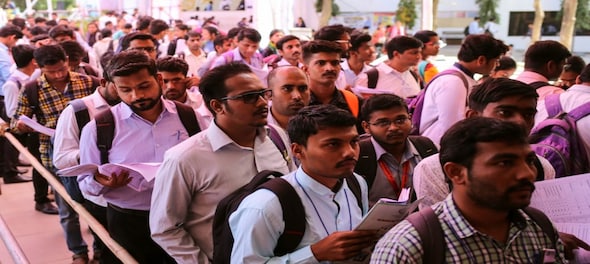
A recent report stated that there is a growing number of people no longer looking for work. After being unable to find the right jobs, millions of Indians, especially women, are exiting the labour force, Bloomberg reported, quoting the unemployment data from Mumbai-based research firm Centre for Monitoring Indian Economy (CMIE).
At present, more than half of the 900 million workforce in India do not want a job, the report said.
“Millions left the labour markets, they stopped even looking for employment, possibly too disappointed with their failure to get a job and under the belief that there were no jobs available,” the CMIE report said.
The overall labour participation rate (LPR) fell from 46 percent to 40 percent between 2017 and 2022. During the same period, 21 million women permanently left the workforce, leaving behind only 9 percent of the eligible working population either employed or looking for jobs, the report said.
Also Read:
According to CMIE, a fall in the LPR shows a lack of growth in employment opportunities. The LPR is a comparison of the labour force with the working-age population. As the working-age population grows, job opportunities also need to grow. If job opportunities do not grow in tandem with the working-age population, then there will be a fall in the LPR.
There are many reasons for the drop in workforce participation, the report said. While some people who are unemployed are students or homemakers, there are others who survive on rental income or pension of elderly household members. Women opt out of the workforce on safety concerns or to attend to time-consuming responsibilities at home.
“A lack of good quality jobs and good transport facilities is what is keeping women from going to work,” Mahesh Vyas, CEO of CMIE, told IndiaSpend in an interview last month.
“It's the failure of the country to produce good quality jobs, good infrastructure, to enthuse women to come out to participate in the labour markets,” he said.
“The large share of discouraged workers suggests that India is unlikely to reap the dividend that its young population has to offer,” Bloomberg quoted economist Kunal Kundu of Bengaluru based Societe Generale as saying.
To keep pace with the growing working-age population, India needs to generate at least 90 million new non-farm jobs by 2030, a 2020-report by McKinsey Global Institute had said. To achieve this, the country needs to clock an annual GDP growth of 8 percent to 8.5 percent.
If India fails to put young people to work, it could get derailed from achieving its developed-country status.
Also Read: Delhi govt to hold stakeholder consultation on April 26 to formulate dedicated cloud kitchen policy
(Edited by : Sudarsanan Mani)
First Published: Apr 25, 2022 4:19 PM IST
Check out our in-depth Market Coverage, Business News & get real-time Stock Market Updates on CNBC-TV18. Also, Watch our channels CNBC-TV18, CNBC Awaaz and CNBC Bajar Live on-the-go!


2024 Lok Sabha Elections | What does a low voter turnout indicate for NDA and I.N.D.I.A Bloc
Apr 29, 2024 5:48 AM
'Borrowed' leaders: Congress hits out at AAP for not fielding their own candidates in Punjab
Apr 28, 2024 9:53 PM
EC asks AAP to modify election campaign song and Kejriwal's party is miffed
Apr 28, 2024 9:25 PM

